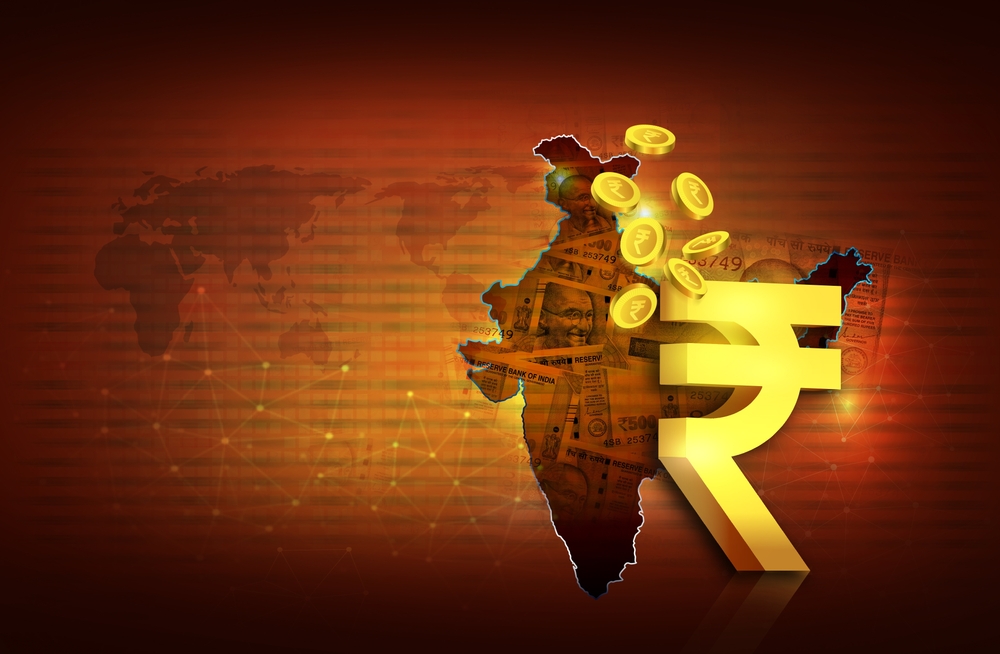
Source: Yahoo Finance
Context behind the fall
In recent months, global investors have been closely monitoring the dramatic decline of the U.S. dollar. The dollar index, a key measure of the greenback's strength against a basket of major currencies, has fallen by 10% since Trump became president.* This represents one of the steepest first-half-year drops since the era of floating exchange rates began in the 1970s. The primary reason behind this slump lies in the trade policies of Trump’s administration, which have sparked uncertainty, reduced foreign investment flows into the U.S., and increased concerns over long-term economic stability.
Logically, one might expect that a weakening dollar would result in a corresponding strengthening of the Indian rupee. Yet, while the rupee has indeed appreciated slightly, its gains have been minimal and carefully contained. The currency recently moved to the 85.50 mark against the dollar, down 1 % from Trump’s inauguration.* Why is the rupee not benefiting more from the dollar's fall? The answer lies in India's economic policy and the dynamics of its financial system.

Source: Yahoo Finance
India's Expansionary Monetary Policy
On June 6, the Reserve Bank of India made a surprising and aggressive monetary policy move. It slashed its key repo rate by 50 basis points to 5.5%, double what analysts expected. Furthermore, the central bank reduced the cash reserve ratio by 100 basis points, giving banks significantly more liquidity to lend. This marked the third rate cut of the year and signaled the RBI's commitment to spurring economic activity amid global uncertainty and subdued domestic inflation.
Several factors motivated this monetary easing. While India’s headline GDP growth remains robust at 7.4%, much of that expansion is driven by agriculture and rural demand, while urban consumption and private investment remain sluggish. The inflation rate, currently well below the RBI's 4% target, provided ample room to stimulate the economy without stoking price pressure.
Additionally, lower interest rates generally reduce the appeal of a country’s assets to global investors. Capital tends to flow toward regions offering higher returns, and the RBI's rate cuts potentially make India a less attractive destination for foreign portfolio investment. This softens demand for the rupee in global currency markets.
Demand for Dollars in the Indian Economy
Beyond the RBI's rate strategy, structural factors are also restraining rupee appreciation. Despite India's improving current account position with a surprise surplus of $13.5 billion in the January-March 2025 quarter, the Indian economy remains heavily reliant on dollar inflows.
Foreign investments, external commercial borrowings, and financial operations often require dollar liquidity. In recent weeks, for example, there has been heightened dollar demand.
Additionally, India’s financial system is still under development in areas like hedging, diversification, and market depth. Many corporations and financial institutions hold dollar reserves to protect against volatility or to finance international trade. This creates persistent structural demand for dollars, regardless of short-term currency market movements.
Why India Does Not Want the Rupee Stronger
While the falling dollar might intuitively suggest that the rupee should strengthen more decisively, India's policy framework and economic structure act as constraints. The central bank's move toward neutral policy guidance suggests that further easing is not guaranteed, but the central bank is clearly focused on growth. The balance between growth and inflation management means that excessive rupee strength is not necessarily desirable.
Moreover, a stronger rupee can hurt exports, which India depends on for both economic growth and employment. Given that exports are still recovering from global trade frictions and logistical disruptions, policymakers are wary of creating headwinds for Indian competitiveness.
A mildly stronger rupee, within a controlled range, is therefore ideal for India at the moment. It helps manage inflation by keeping import costs in check, especially for key goods like crude oil, while avoiding a dramatic hit to exports.
* Past performance is no guarantee of future results.


